The Alter Ego of Problem Solving
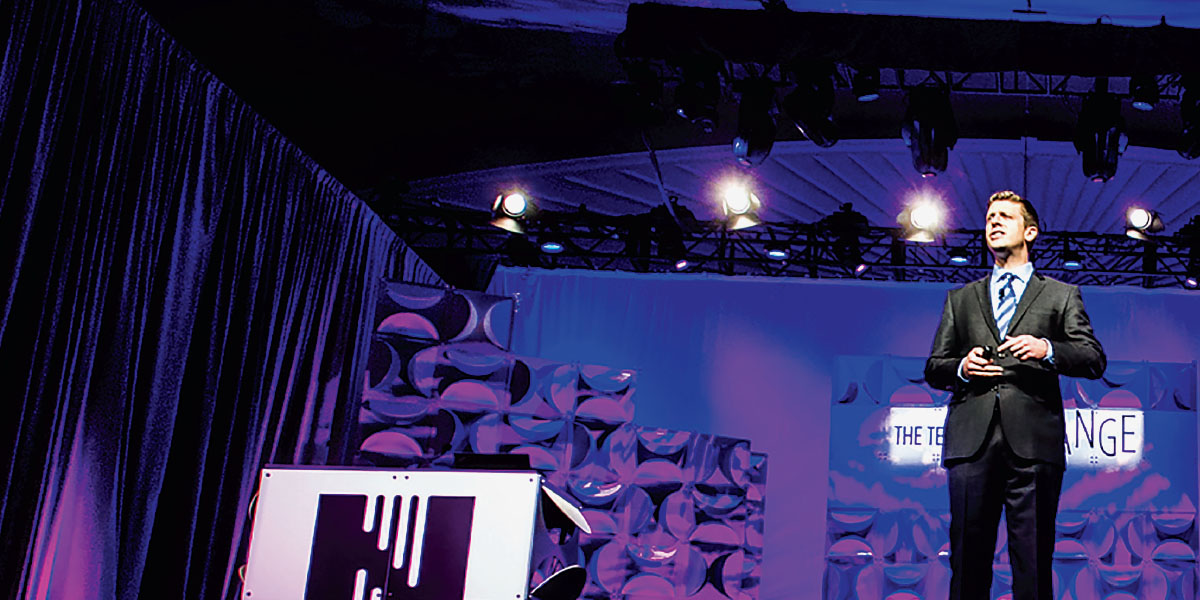
Rather than fixating on what is wrong with your organization, Dan Heath suggests looking for the bright spots that can be replicated and expanded.
Most of us want to fix what’s broken. That can be a positive response, but it should not be our sole approach, according to general session presenter Dan Heath, co-author of best-sellers Decisive, Switch, and Made to Stick. Heath is also a senior fellow at Duke University’s CASE Center and a founder of the Change Academy, a program designed to help social-sector leaders accelerate and scale their good works.
For many leaders, the tendency to focus on problems and how to solve them is so instinctive that it can blind them to asking the question of what is working already and to doing more of that, suggested Heath. Identifying these “bright spots” seems logical, yet most organizations spend 95 percent of their time on troubleshooting and only 5 percent on trying to replicate their successes, he added.
This is not to disparage problem solving—the “conjoined twin” of a focus on the positive, argued Heath. One approach can be as powerful and useful as the other, but since bright spots often play a contributing role in the solution, it is critical to exercise both biceps, insisted Heath. “While putting out fires may be part of your job, this mindset can take over if you let it. You have to intentionally carve time out of your schedule to look for what is working.”
The Positive Deviant
One way to characterize a bright spot is as the positive deviant in a pool of data, noted Heath. Consider a typical college or university development office. If you are managing this process, you can look at the amount that each employee raised during the previous quarter, and then cumulatively throughout the year, suggested Heath. The tendency might be to identify those individuals bringing in the least and focus on setting goals for their improvement. “The theory is that you don’t need to worry about those who are having the most success. Yet, what if you spent more time studying what your overachievers are doing differently—how they are spending their time—and then using this information to help everyone on the team do better?” asked Heath.
The same approach can be used in change management and employee engagement initiatives, Heath noted. Many organizations in recent years have undergone significant budget cuts and weathered either employee layoffs or a moratorium on salary increases, or both—in many cases resulting in a big hit on employee morale, explained Heath. Yet, even in these instances there are usually some employees who manage to remain happy and positive about their work. So, the exercise becomes one of drilling down to learn what is behind the mindset of those bright-spot employees to see whether and how their attitudes might be adopted by others.
Heath recounted results of research done to analyze the huge turnover among a group of hospital nurses. In this scenario, the real question to ask was not, “Why are all these nurses leaving?” Rather, he said, it’s better to learn why the other nurses are staying. “We found that what kept the nurses loyal to the organization was a sense of professional identify and their love of being caregivers.” That became a directive signal, said Heath. “Part of the solution became identifying what programs we could add to boost retention.” In this case, incorporating a mentorship program reduced turnover by 20 percent—simply by shifting outlook and exercising the left bicep versus the right, Heath concluded.
Success deserves a leader’s analysis as well as a doling out of accolades, argued Heath. “Take your successes and study them. That said, don’t assume that the 20 percent who, in this case represent your bright spot, are totally different from anyone else” he warned. “Bright spots are not magic, and it would be misleading to suggest that you can continue to make the rest of your employees happy about not getting a raise. If you seek to lead a group in a particular direction, the challenge becomes finding which levers you can pull to make it a bit better and more palatable for everyone.”
Motivating Change
For every change initiative, a primary concern becomes how to get everyone on board. “The good news is that being a leader doesn’t mean you have to single-handedly come up with all the great ideas,” said Health. “What you must do is find the bright spots and set up circumstances for additional success.”
That’s not to say that change isn’t a challenge. While there are huge changes that many take on willingly (getting married, having children) that can bring happiness, and certain changes (technology, fashion) that most welcome for the convenience and variety they bring, much of the change in our lives can be difficult to accept or accomplish, said Heath.
“What psychology tells us about why change can be so hard is that we all have a split in our brains,” says Heath. “We make a diet resolution to eat healthier and to exercise, yet later that same night we find ourselves craving a deep-dish pizza.” This conflict is baked into our brains such that the rational, conscious system that plans and analyzes is bombarded by the emotional, unconscious system that gets a whiff of that Cinnabon in the airport and throws us off course.
Worse than the fact that these two factions are constantly vying for our attention is that it’s really not a fair fight.” The emotional system always wields more power, said Heath. “It’s like a huge elephant living in our heads, with this well-intentioned little person riding on the back of the elephant trying to rationally rein in this beast. The goal is to successfully align these two sides of our brains.”
Change at the organizational level brings a whole new challenge, because of the attempt to affect group behavior and assumptions, suggested Heath. A primary mistake many leaders make is attempting to motivate people with information. “We create these great PowerPoint slides with data and charts and send memos with bullet points. But who do we think we are we talking to?
“It’s certainly not the elephant, who seems pretty comfortable with the way things were working last week.”
Sometimes It Takes More
Beyond the issue of motivation, leaders must also consider whether their change challenge is a direction issue (people don’t know what is expected of them or how to proceed), or a pathway problem (there are too many obstacles in the way). To clarify these issues, here are some actions that Heath suggested.
- Provide clear direction. As part of building a framework for instituting behavior change, leaders must first provide individuals with clear direction about where to go and how to get there. Sometimes this entails breaking change into a series of manageable or logical steps to ease what may seem daunting when looking at the big picture, noted Heath.
- Boil the strategic down to the tactical, and throughout the process, remind others of what they’ve already conquered so they can sense the momentum. “Most people are more easily motivated if they see some quick results.”
- Motivate your people. No change journey will go anywhere or last very long without the energy and passion of your people, argued Heath. To say that information is not enough to motivate change is not a diatribe against data, but don’t discount the power of appealing to emotion as a force for changing behavior. He suggested a three-step model for motivating employees:
- Tap motivation. Where does motivation already exist within your organization? This naturally occurring resource might represent 10 percent of your workforce. Consider how you can you enlist these folks to motivate change in others.
- Spark motivation. What would drive motivation beyond those who are already on board? Perhaps others simply need to envision an initiative in a new light. Consider also how to create conditions for a particular behavior to spread, letting people spend more time among those who support change to allow a critical mass in favor of change to grow and gain steam.
- Sustain motivation. How can you keep your people moving forward following the achievement of early goals? At some point, goals may need to shift along with any anticipated payoff in order to keep employees engaged. Consider also how to encourage collegiality and a sense of team effort that can increase the long-term viability of change efforts.
- Clear the pathway. Finally, increase the likelihood of a successful change initiative by removing any barriers and cultivating a culture conducive to the change you seek. For change to take hold, it must seem within reach.
Sometimes an obstacle may be blocking the path that keeps even well-intentioned or motivated people from tackling change. A small tweak to the environment can often solve what you may think is a motivation problem, said Heath.
For instance, some leaders are too quick to attribute inertia to the generational differences of employees. However, what might look like resistance to change may be a lack of practice with a new process or a new technology, said Heath. “Any correlation between age and resistance to change could be caused by the accumulation of habits over time. Understandably, it can be awkward to suddenly start doing something differently than you have done it all your life,” he explained.
“This is where leaders must help make the way forward not only evident, but also ultimately doable. Clearing the path of obstacles may include equipping your employees with the training and tools they need to tackle change.”
KARLA HIGNITE, Ogden, Utah, is a contributing editor for Business Officer.
Crowley’s Candids
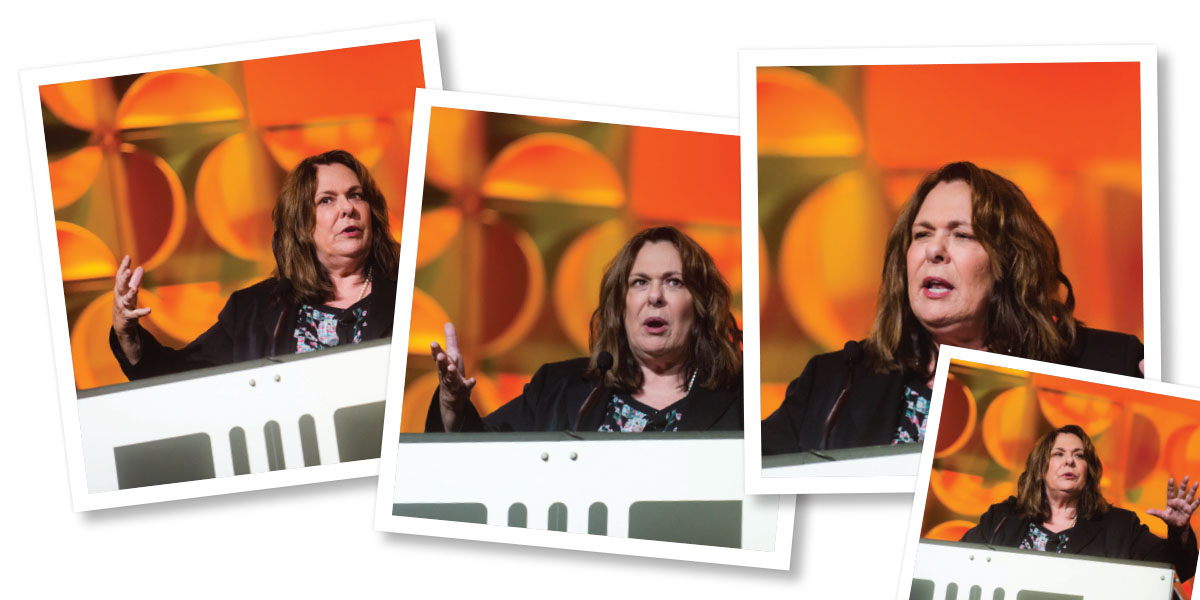
Admitting that her “candidates to watch” in the last presidential election were Chris Christie and Robert McDonnell, Candy Crowley forged ahead with commentary on the nation’s complex issues and the candidates who think they can solve them.
In her Monday general session keynote, Candy Crowley began by saying: “Everyone asks about Congress. What is wrong with those people? We all want to know.” The award-winning journalist and former chief political correspondent for CNN admitted, “The truth is that the answer tends to be ‘us.’ While this is perhaps the worst and nastiest Congress anyone can remember, 96 percent of those up for re-election were voted back to Congress.”
The parts are better than the whole, explained Crowley. “Most come with good intentions and think they can make a difference. But, the system is no longer built for compromise. And you can expect no major movement in legislation, since the 2016 election campaign is already underway.”
And speaking of the campaign, Crowley went on to briefly describe a few of the major candidates, in what she called “my snapshot of time.”
 Sen. Bernie Sanders (D-VT): “He’s taking a role in making Hillary Clinton speak out on things she does not want to talk about. What likely scares Hillary the most is that she can’t walk away from Barack Obama. Whether he is a one-off or a powerhouse of Democratic strength, Hillary is running against history [as a woman], not necessarily other Democratic candidates.”
Sen. Bernie Sanders (D-VT): “He’s taking a role in making Hillary Clinton speak out on things she does not want to talk about. What likely scares Hillary the most is that she can’t walk away from Barack Obama. Whether he is a one-off or a powerhouse of Democratic strength, Hillary is running against history [as a woman], not necessarily other Democratic candidates.”
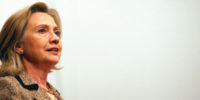 Former Secretary of State, Hillary Clinton: “She needs the same numbers as Obama pulled for minority and youth turnout. But she’s rusty on the campaign trail; she seems to be behind plexiglass. You can see and hear her, but you still don’t know who she is.”
Former Secretary of State, Hillary Clinton: “She needs the same numbers as Obama pulled for minority and youth turnout. But she’s rusty on the campaign trail; she seems to be behind plexiglass. You can see and hear her, but you still don’t know who she is.”
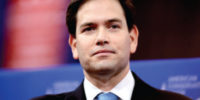 Sen. Marco Rubio (R-FL): “People are concerned about his newness on the scene, which they also claimed about Barack Obama when he started campaigning. If I had to say this right now, I’d say that it will be Jeb Bush against Hillary Clinton.”
Sen. Marco Rubio (R-FL): “People are concerned about his newness on the scene, which they also claimed about Barack Obama when he started campaigning. If I had to say this right now, I’d say that it will be Jeb Bush against Hillary Clinton.”
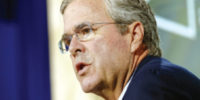 Former Florida Governor Jeb Bush: “He’s a fairly good campaigner. I’d say, ‘Tell us who you are and what you’ll do.’”
Former Florida Governor Jeb Bush: “He’s a fairly good campaigner. I’d say, ‘Tell us who you are and what you’ll do.’”
CAROLE SCHWEITZER is editor in chief of Business Officer.
Business Model Under Attack

Higher education is particularly vulnerable to market invasion by online providers, lower-cost options, and other competition. Stuart Butler, Brookings senior fellow and long-time economic adviser, offers some defensive strategies.
Stuart Butler, a senior fellow at the Brookings Institution, Washington, D.C., spends his days studying how industries change over time, and making predictions for future changes. In a crowded Sunday afternoon session, he shared with attendees how his research shows that the future of higher education will be affected by disruptive innovation, a process that will present an existential threat to the current model.
“We usually see disruptive innovation in industries that are under financial pressure caused by upstart ideas or new business models,” Butler said. “Higher education is dealing with customers’ rising tuition and debt, along with the high costs of staying competitive. And only 42 percent of business officers believe the current model is sustainable.”
In the first phase of disruptive innovation, new entrants to the market use new technology to aim at an ignored or underserved customer segment.
A Vulnerable Model
In higher education, new products are already countering the challenges of high cost and inconvenience. For instance, online universities have taken a share of the market, and new types of educational certifications have emerged.
“Usually, these new products are not very good when they are first introduced, but the new players steadily improve their products while keeping costs down,” Butler said, referencing the original Apple computer in 1976, which was vastly improved by 1984. “Then there is a sudden, unexpected invasion of the main market and these new business models transform the industry.”
Higher education is particularly vulnerable to such market invasion because of rapid improvements in online instruction, and traditional institutions’ heavy physical investments in infrastructure must compete with the “lean, mean” online education providers.
Several new business models have appeared, including competency-based degree programs, which measure what students know versus how much time they have spent in the classroom. There are also low-cost degrees, such as College for America’s $10,000 degrees, new partnerships between universities and massive open online course providers, and micro-degrees.
Deliberate Defenses
Colleges and universities that want to continue to compete in this new higher education environment can take several defensive steps, Butler said. For instance, they can absorb new technologies into their existing models, similar to the way that newspapers established fire walls requiring readers to pay to view online content.
They could use regulatory barriers such as accreditation to fight off new entrants to the market, but Butler predicts an increase in new types of accreditation and credentialing.
The alternative is to change the highereducation business model by:
Embracing unbundling, by offering multiple products with various prices, rather than one degree program.
Focusing on competitive advantages and abandoning other activities. For example, some four-year universities are focusing on the final two years of higher-level courses and considering dropping the first two years of basics.
Implementing the general contractor model. Organize a suite of skills and sell the ability to assemble all the pieces into a less expensive degree.
Whatever the future for your college or university, Butler believes it will look way different than it does today. What can you do in the meantime? Butler suggests: “Accept that fact and begin to reinvent your product before it’s too late.”
NANCY MANN JACKSON, Madison, Ala., covers higher education business issues for Business Officer.
Why Higher Ed Really Does Matter
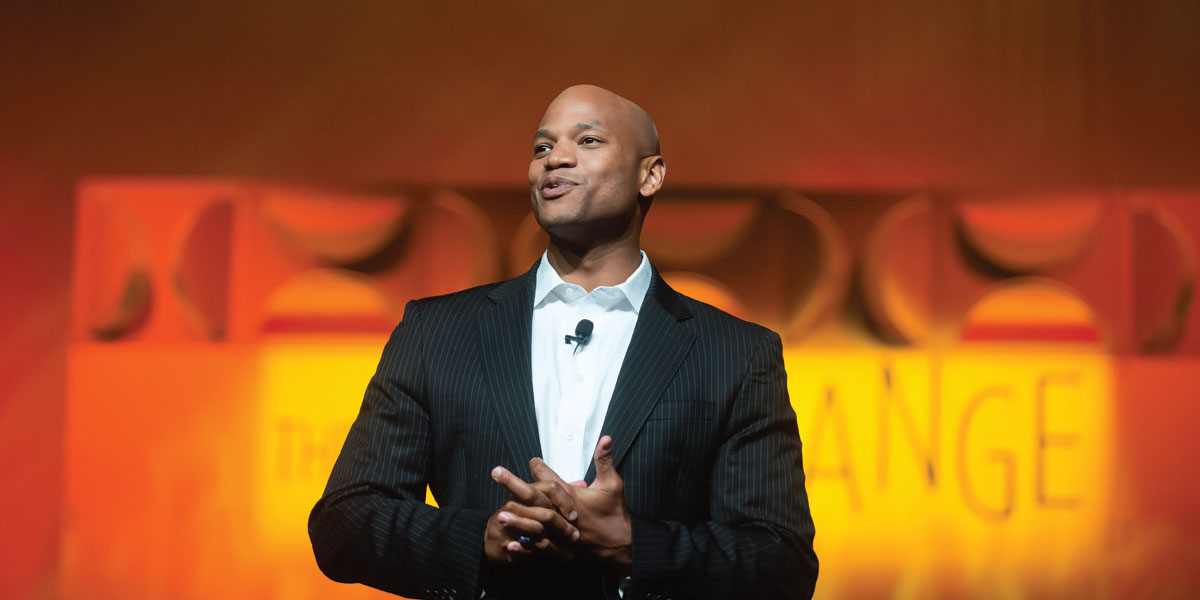
In a highly motivational keynote, social entrepreneur, youth advocate, and author Wes Moore, spoke about the importance of higher education and the critical role that institutions play in students’ lives and in society.
If a student attends a higher education institution and at the end, walks out with a paper degree, thinking that the mission is accomplished, then he or she has completely missed the point, said Wes Moore, in his keynote address Tuesday. “Higher education’s role is much bigger. It’s not just about what students learn, but also about whom they learn from and with. Higher education helps create connections and networks for students to build social capital.”
Taking a leaf out of his own life, Moore said that higher education “is the greatest way of establishing a sense of freedom for those who may not have it.” By being surrounded and encouraged by his mother, grandparents, mentors, administrators, teachers, and professors, he was able to understand that he had the freedom to have dreams and aspirations and pursue them. “That’s what higher education provides to kids who would not have such freedom otherwise.”
Talking about the “power of expectations,” Moore said that “we’re the products of our expectations and not the products of our environments.” So if mentors set expectations for students to perform better, then chances are that they will. But if the expectations are set lower, then students will only perform to that level. “The role of institutions,” said Moore, “is to create leaders who will change the directions of the communities they go to after completing their higher education.”
PREETI VASISHTHA is deputy editor of Business Officer.





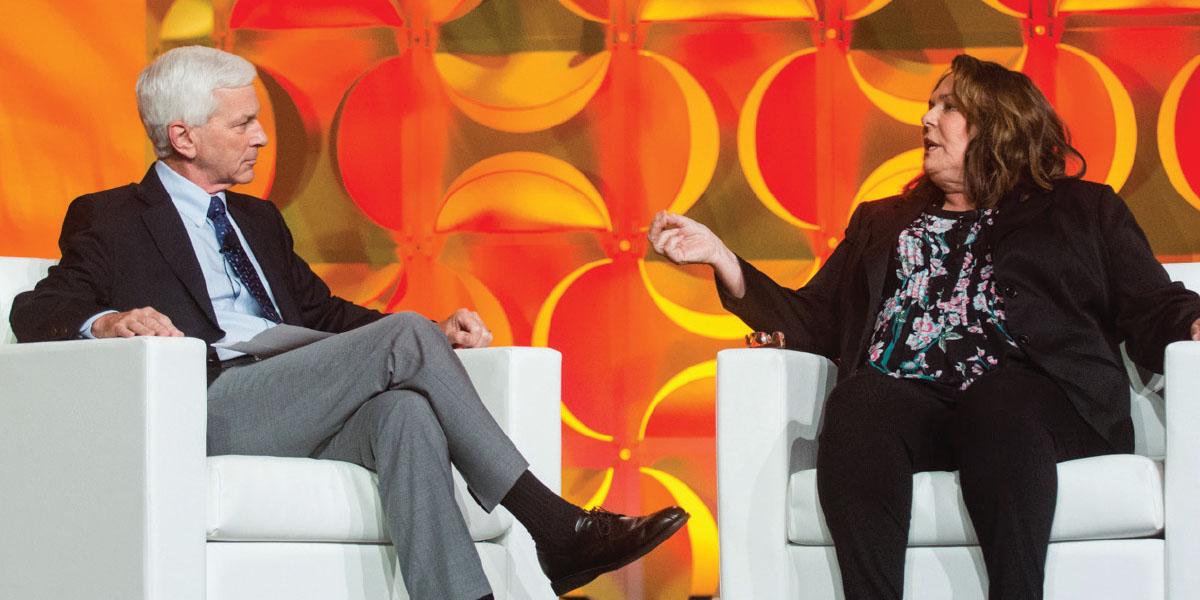 To delve deeper into Crowley’s political insights, John Walda, NACUBO president and CEO, asked a few more questions.
To delve deeper into Crowley’s political insights, John Walda, NACUBO president and CEO, asked a few more questions.